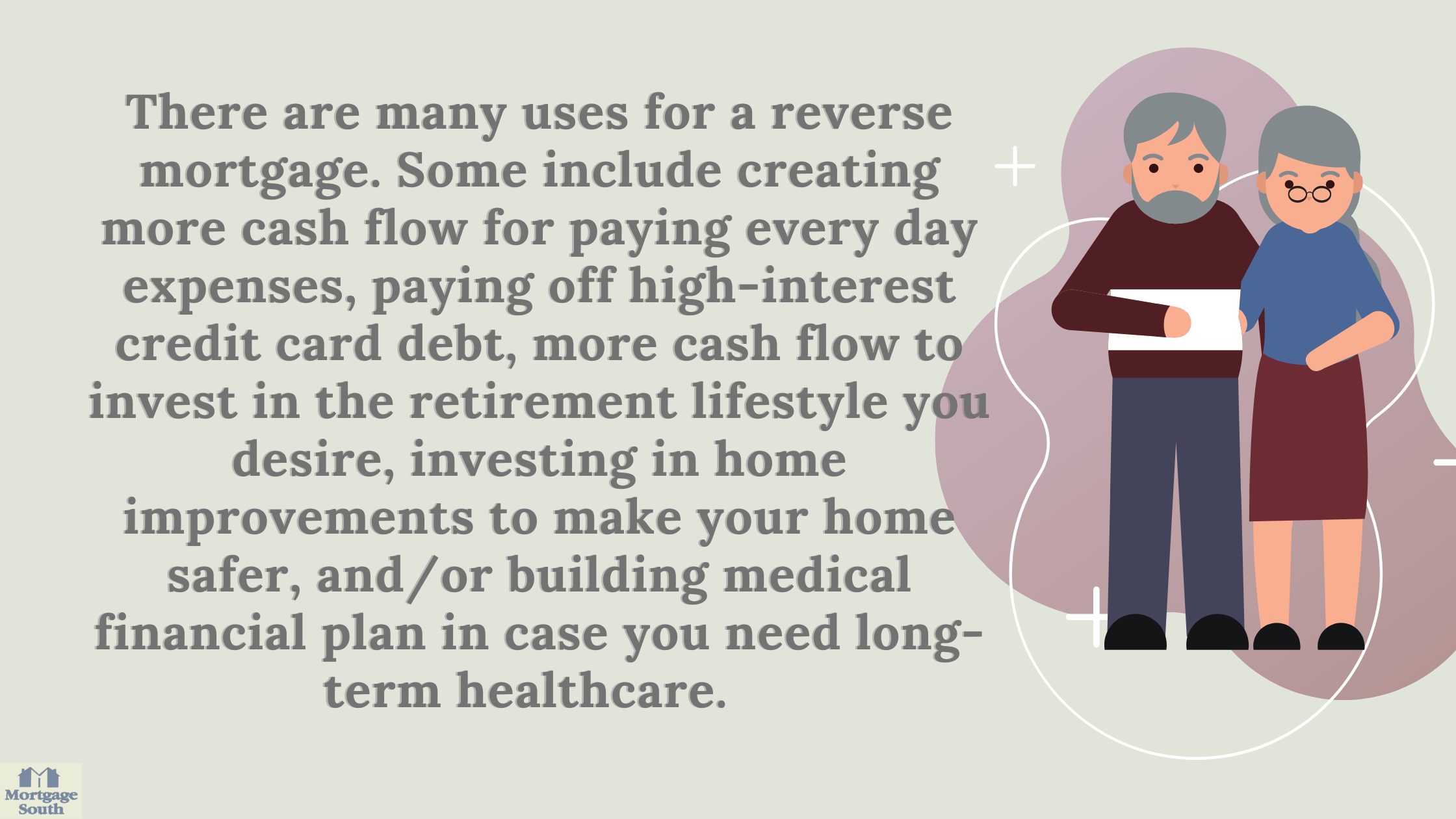Here are some ways older Americans are putting their reverse mortgages to work:
- Pay Off Current Mortgage
Your reverse mortgage pays off your existing mortgage which is a requirement of the loan. Although this powerful feature means you no longer have any monthly mortgage payments, you are still responsible for maintaining your home and paying property taxes and homeowners insurance, as you would with any home mortgage.
2. Create more monthly cash flow
The absence of monthly mortgage payments should free up more spendable cash for you each month. If you don’t have an existing mortgage that first needs to be paid off, you should have even more cash, which you can choose to receive via a variety of disbursement plans, including a line of credit as a buffer against financial emergencies.
3. Pay off high-interest debt
Replacing high-interest debt with lower-interest debt is simply smart money management, especially if you’ve been carrying a balance forward each month, incurring double-digit interest rates.
4. Make home improvements
Fixing up your home to make it safer and more comfortable is a great aging-in-place strategy that allows you to continue living in the home you love. You must continue to maintain your property and regularly pay your property taxes and homeowners insurance.
5. Buy another home
Instead of fixing up your current home, sell it and use a reverse mortgage to buy another one, better suited to your current and future needs. Typically, homebuyers use some or all of the proceeds from the sale of their home, or personal savings for their down payment. They combine these funds with a reverse mortgage to complete the purchase.
6. Pay medical expenses now and in the future
Many reverse mortgage borrowers use a reverse mortgage line of credit as a sort of long-term care health insurance policy. Any portion of the reverse mortgage line of credit that you don’t use will continue to increase, giving you a growing, go-to source of funds to help you pay for medical emergencies or your at home long-term care needs.
7. Preserve your investment portfolio
Having a reverse mortgage gives you more flexibility to manage your investments. Use funds from a reverse mortgage to keep from selling investments that are performing well or others that haven’t performed well, but that you expect to recover. Some borrowers also incorporate a reverse mortgage as a way to defend their portfolios against a sequence of returns risk, which can occur when retirees early in their retirement begin drawing down their main investment accounts at the same time the stock market is declining. By drawing from a reverse mortgage instead, they may largely offset this downside risk.
8. Delay Taking Social Security
Use a reverse mortgage to bridge your need for retirement income until your Social Security payments begin. For every year that you can delay taking Social Security from 62 to 70, you can get as much as 8% more.
9. Continue your legacy
Help out your children or grandchildren financially — help with their down payment on a new home or help with their student loans, giving them a better chance to secure a strong financial foundation for the future.
10. Fund Your Retirement Lifestyle
No matter how you use the money from your home equity, you can fund the retirement lifestyle that best fits you and your family’s needs.

